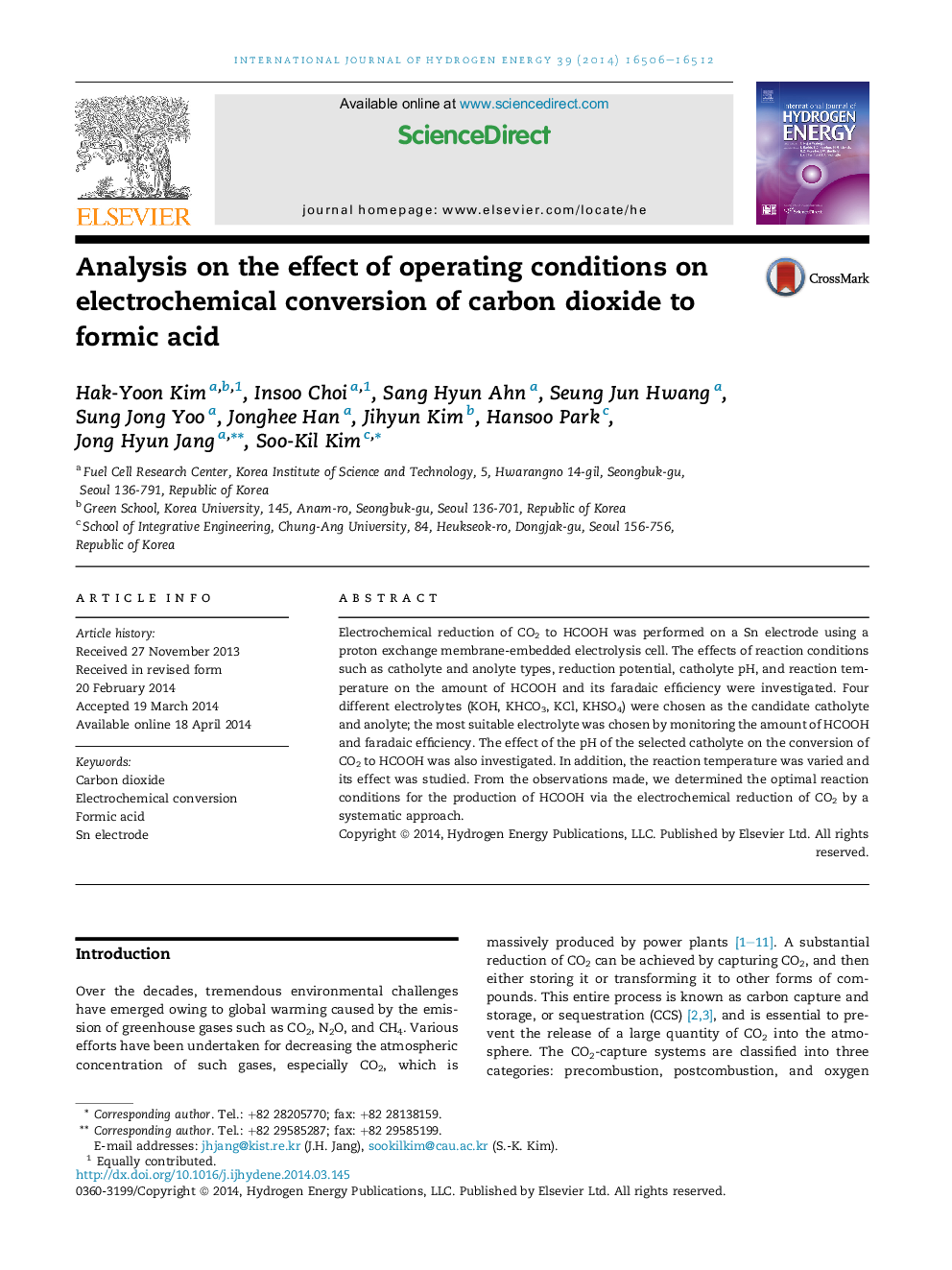| Article ID | Journal | Published Year | Pages | File Type |
|---|---|---|---|---|
| 1280989 | International Journal of Hydrogen Energy | 2014 | 7 Pages |
•The optimal condition for conversion of CO2 into HCOOH was investigated.•KCl catholyte showed highest efficiency at −1.4 VAg/AgCl.•The optimal pH was 4.0, where conversion of CO2 into HCOOH overwhelmed HER.•KOH anolyte exhibited the highest production of HCOOH.•The highest efficiency for HCOOH production was obtained at 20 °C.
Electrochemical reduction of CO2 to HCOOH was performed on a Sn electrode using a proton exchange membrane-embedded electrolysis cell. The effects of reaction conditions such as catholyte and anolyte types, reduction potential, catholyte pH, and reaction temperature on the amount of HCOOH and its faradaic efficiency were investigated. Four different electrolytes (KOH, KHCO3, KCl, KHSO4) were chosen as the candidate catholyte and anolyte; the most suitable electrolyte was chosen by monitoring the amount of HCOOH and faradaic efficiency. The effect of the pH of the selected catholyte on the conversion of CO2 to HCOOH was also investigated. In addition, the reaction temperature was varied and its effect was studied. From the observations made, we determined the optimal reaction conditions for the production of HCOOH via the electrochemical reduction of CO2 by a systematic approach.
